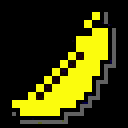First of all, it’s terrific.
I was surprised to find that the frontlight can never be turned completely off while the Kindle is awake.
Also regarding the frontlight, I’m pleasantly surprised that, when it’s set at a modest level in a dimly-lit room, it has the appearance of not being lit at all, but merely of being more “white” than it is and as a result reflecting more ambient light, almost magically so. I didn’t expect to want to leave the light on all the time, but for this reason, I do.
When set too high, or when in a too-dark room, there is an appearance of unevenness with the lighting, but it’s not terribly distracting.
What is a bit distracting is how surreal it can look when something (like your thumb or head) is casting a shadow on the surface in certain lighting; the area around the shadow looks mostly illuminated by the ambient light, and the area under the shadow has an odd blue glow to it, since the frontlight’s effect is more apparent there.
Having fonts other than Caecilia is nice, although I can’t imagine anybody wanting to read for any length of time in Futura or Helvetica. Baskerville is of course classic for typesetting books, but because of its delicate letterforms and small x-height doesn’t really suit the (relatively) low-contrast and (relatively) low-resolution Kindle. There doesn’t seem to be an ideal “small” font size for Baskerville, at least not for my eyes. For these reasons I’ve so far stuck with Palatino, a font that I don’t really like very much, but which is less “artificial”-feeling than Caecilia, anyway.
The new UI elements (and the font in which they’re set, some Futura-like geometric I can’t identify) are really attractive. You can tell a lot of time was spent here and it gives the device a lot more personality and finish.
As expected, I’m frustrated by the lack of a hardware page-turn button, particularly while reading in bed, where (with the face of the Kindle pointed slightly downward) my thumb becomes a crucial support point, and is therefore not free to tap the screen to turn pages. In other interactions I’m also forced to use two hands quite a bit.
It was worth the upgrade even if only for the frontlight, and despite its small and few drawbacks, the overall improvement (over the Kindle 3, I should mention) make it a no-brainer.
